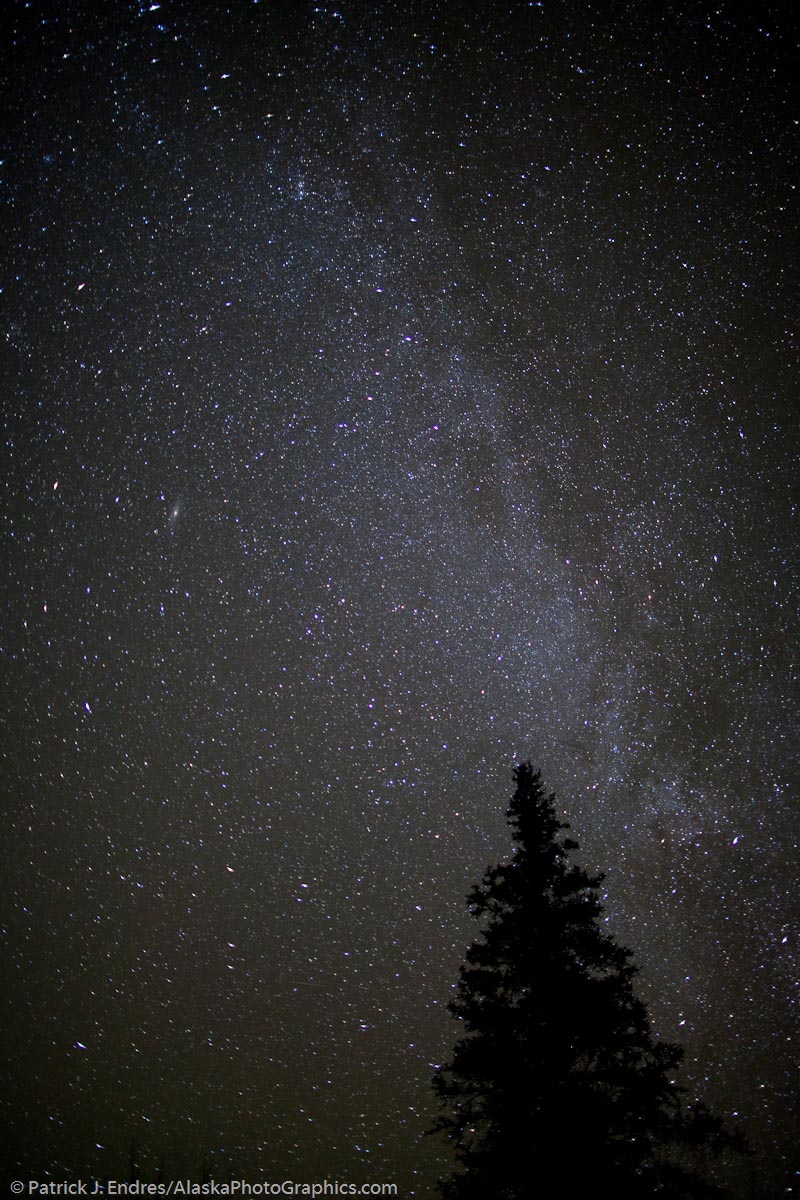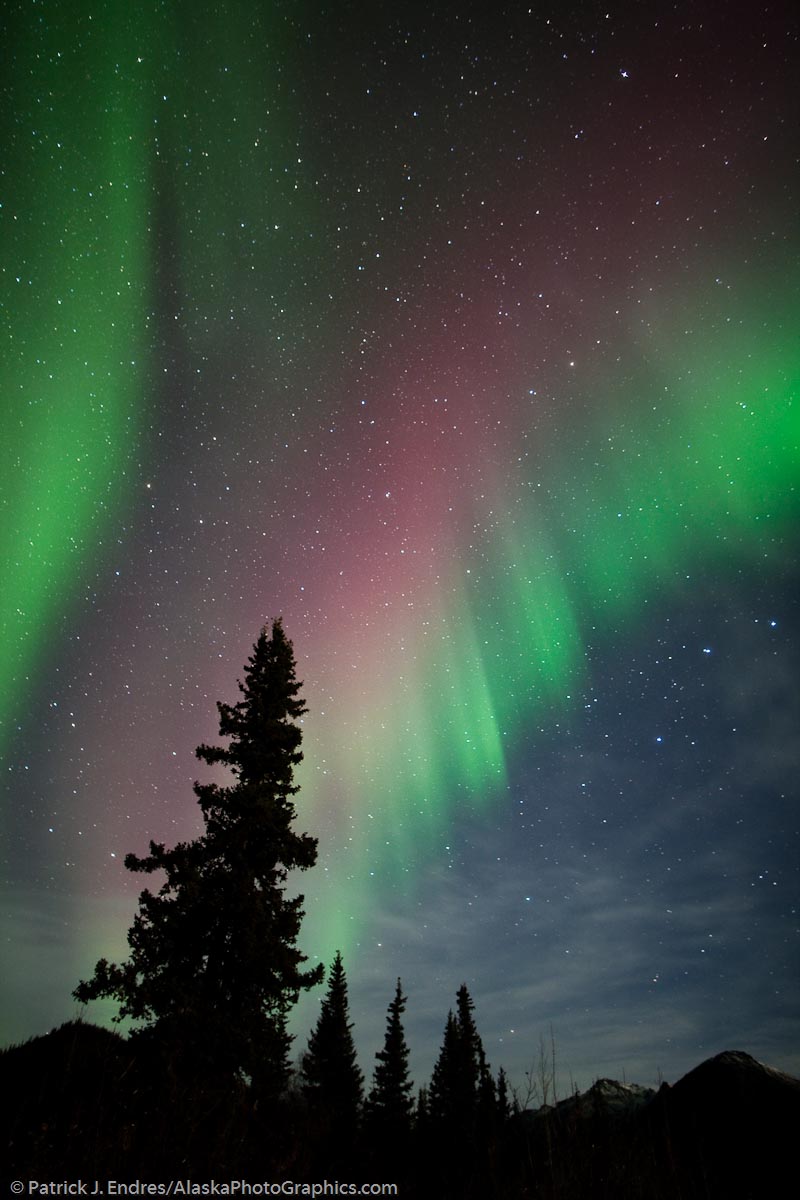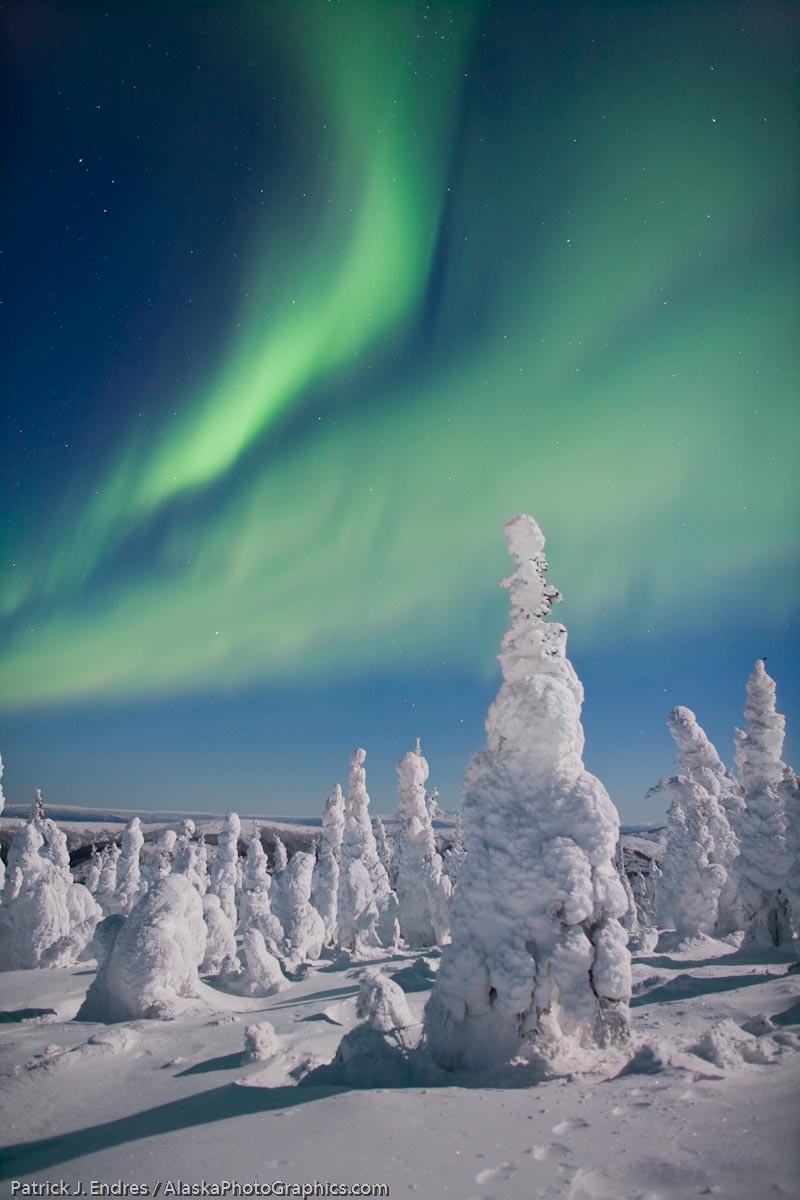
No aurora in the sky, so I shot the milky way galaxy. If you look close in the upper left you can see the Andromeda galaxy. This starry night feel won't happen on a full moon night. Canon 5D Mark II, 24mm f/1.4L, 30 sec. @ f/1.4, ISO 1600
What are the best night sky conditions in which to photograph the northern lights? It is a question that can be answered in variations, but I’ve resorted to the simplest answer…whenever the northern lights are visible! Brushing that comment aside, I really don’t think there are “best conditions”, it really depends on your interest. I’ve photographed the aurora under a full moon which casts light upon the landscape, and on a dark moonless night with the sky filled with stars. Both extremes, and all the variations in between render great shooting conditions.
There are however, a few things to consider, based on what kind of image you seek. A moon-less night will provide a star-filled sky, something amazing to behold indeed. Your foreground is likely to be very dark and depending on the location of the aurora, may or may not be suitable. If you are fine to exclude the overall landscape and perhaps silhouette a tree or something similar, it is less of a factor. And of course, if you shoot directly into the sky without any foreground at all, some great imagery can be captured. These conditions are edging towards the realm of astro-photography technique, and I won’t go into that here. In particular, if the aurora is quite bright on a dark night, gathering ambient light to give distinction to the foreground gets even harder. Bright auroras will call for a shorter exposure time, thereby limiting ambient light on your foreground. On average, the exposures will tend to be much longer on a night without the moonlight.

There was a little moon light for this shot, but it had just crested the hills and offered just a little side light on the distant mountains. Red and green aurora borealis over the spruce trees. Canon 1Ds Mark III, 24mm f/1.4, 30 secs @ f/1.4, ISO 800.
In contrast, on a moon-lit night your exposure will be considerably shorter due to all the ambient light cast from the moon (depending on its angle in the sky). In this case, strong aurora is helpful, dim aurora can lack definition and a longer exposure tends to render a very bright foreground. Additionally, you need to have a good grasp on your foreground subjects since they will be well lit. Using landscape elements to give a sense of anchor or place to the image is helpful. Keep in mind that your sky however, will lack that “starry, starry night” feel, and the strength of the subject is found in balance of the foreground and the sky. I’ve included a few examples here demonstrating the big difference in look between the two extremes.
Note the comparison in exposure times between the two spruce tree shots. The top frame was taken at 30 seconds, and the bottom one in effect at a 3 second equivalent since it was shot at f/2.0. That is a huge difference in time. If the aurora is active in shape and movement, you could capture 9 frames to 1 in the brighter conditions!

Full moonlight casts a strong shadow in this scene, and the wintry conditions, well lit, offer a interesting feel in contrast to a dark, silhouetted forest of trees. Aurora borealis over a snow loaded boreal forest of Spruce trees. Note the absence of stars in this shot compared to the one above. Canon 1Ds Mark III, 24mm f/1.4L, 6 seconds @ f/2.0, ISO 800
In summary here is a list of things to consider regarding the moon before embarking upon a night of aurora photography:
- What is the phase of the moon
- When does it rise
- Where does it rise
- Will you be shooting with the moon in your frame?
- Consider working with the moon light in the sky both just before it rises and just after it sets
- Moon shadow- know your landscape ahead of time and consider the angle of the moonlight on your subject.
There are some very cool and helpful Iphone apps for figuring moon and other celestial data out. I’m working on a “My favorite Iphone Apps” post and that will be forthcoming, highlighting the programs I find useful in the field.






